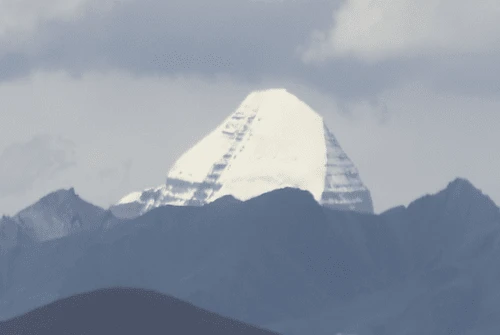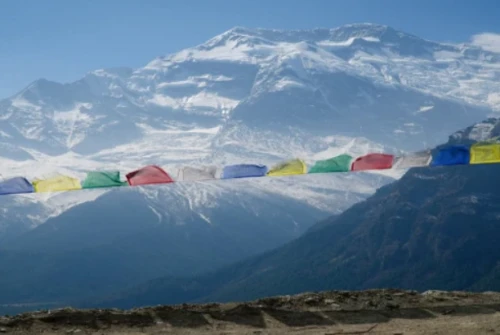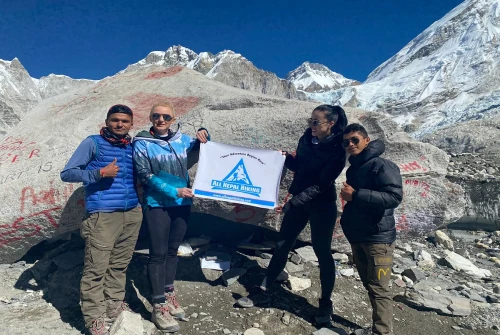Nepal, a land steeped in ancient traditions and diverse cultural heritage, is home to some of the most vibrant and unique festivals in the world. With the majority of its population following Hinduism, the festivals in Nepal are a blend of spiritual reverence, family bonding, and exuberant celebrations. From the biggest festival, Dashain, to the colorful chaos of Holi, each festival reflects the country's rich cultural fabric. Here’s a guide to Nepal’s top 5 major festivals, how they’re celebrated, and the significance behind them.
Top 5 Popular Festivals of Nepal In 2024
Dashain / Vijaya Dashami: The Biggest Festival of Nepal
What is Dashain?
Dashain is the largest and most significant festival in Nepal. Celebrated over 15 days, it is a grand occasion that unites families and communities across the country. Dashain is the festival of victory, symbolizing the triumph of good over evil, and it celebrates the victory of Goddess Durga over the demon Mahishasura in Hindu mythology.
How is Dashain Celebrated?
Ghatasthapana (Day 1): The festival begins with Ghatasthapana, where the worship of Goddess Durga starts, and devotees set up a sacred jar (ghata) for ritualistic worship.
Maha Ashtami (Day 8): On this day, animal sacrifices, including goats and buffaloes, are offered to Goddess Kali, and the meat is distributed as Prasad.
Tika and Jamara (Day 10): The most important day of Dashain is the 10th day when people receive Tika (a mixture of yogurt, rice, and vermilion) and Jamara (barley grass) from elders, who bless them for prosperity and long life.
Significance:
Dashain commemorates the victory of Goddess Durga over the demon Mahishasura, symbolizing the triumph of good over evil.
Things to Do During Dashain:
Play Cards & Games: It’s a tradition to gather with family and friends for card games and other fun activities.
Feasts & Gatherings: Families reunite, prepare delicious food, and celebrate together.
Fly Kites & Build Swings: Both are traditional activities, especially in rural areas.
Tihar / Deepawali: The Festival of Lights
What is Tihar?
Tihar, also known as Deepawali, is the second biggest festival in Nepal. It is a festival of lights, celebrated to honor various animals and deities, with an emphasis on Goddess Lakshmi, the goddess of wealth. Tihar comes shortly after Dashain and is celebrated with the lighting of candles, oil lamps, and colorful decorations.
How is Tihar Celebrated?
Day 1: Kukur Tihar (Dogs): The first day of Tihar is dedicated to dogs, who are worshipped for their loyalty. Offerings of garlands and food are made to dogs, and prayers are recited for their well-being.
Day 2: Gai Tihar (Cows): The second day is for honoring cows, considered sacred in Hinduism. People decorate cows with garlands, and prayers are offered for prosperity.
Day 3: Laxmi Puja (Goddess Lakshmi): Homes and streets are illuminated with oil lamps to welcome the Goddess of wealth, Lakshmi. People clean their houses and decorate them with lights and rangolis.
Day 4: Bhai Tika (Brothers): The fifth day is a special occasion when sisters put Tika on their brothers' foreheads and pray for their long life and happiness.
Significance:
Tihar celebrates the bond between humans and animals, and it also honors Goddess Lakshmi, bringing light, wealth, and prosperity into people’s lives.
Things to Do During Tihar:
Play Deusi Bhailo: Groups of people go door-to-door singing songs, while receiving food and money.
Fireworks & Lights: Tihar is a colorful spectacle, with homes and streets lit up, and fireworks illuminating the sky.
Holi / Fagu Purnima: The Festival of Colors
What is Holi?
Holi, the Festival of Colors, is one of the most fun-filled and widely celebrated festivals in Nepal. It marks the arrival of spring and the end of winter, bringing people together in joyous revelry. Holi is celebrated with an explosion of colored powders and water, symbolizing the triumph of love and good over evil.
How is Holi Celebrated?
On this day, people throw colored powder and water at each other, dance to music, and celebrate with friends and family. Streets become a riot of colors as the atmosphere fills with laughter, music, and cheer.
Significance:
Holi is celebrated to welcome spring and bid farewell to winter. It also symbolizes the victory of good over evil, as it marks the destruction of the demoness Holika.
Things to Do During Holi:
Throw Colors: People throw dry colors, water balloons, and even splash colorful water on each other.
Dance & Party: Public gatherings with music and dance are common, and many people enjoy playing Holi in the streets.
Maha Shivaratri: Honoring Lord Shiva
What is Maha Shivaratri?
Maha Shivaratri, meaning “The Night of Shiva,” is a solemn Hindu festival dedicated to Lord Shiva. Devotees observe fasting and night-long vigils, offering prayers and chanting mantras to seek the blessings of Shiva for spiritual growth and prosperity.
How is Maha Shivaratri Celebrated?
Pashupatinath Temple: Thousands of devotees flock to the Pashupatinath Temple in Kathmandu to worship Lord Shiva. Devotees chant “Om Namah Shivaya” and meditate throughout the night.
Fire & Offerings: Many devotees keep a bonfire and offer food, flowers, and fruits to Lord Shiva while performing rituals.
Significance:
Maha Shivaratri commemorates Lord Shiva's divine marriage to Goddess Parvati and his cosmic dance (Tandava). It is a time for spiritual introspection and devotion.
Things to Do During Maha Shivaratri:
Night Vigil & Fasting: Devotees fast and stay awake, chanting mantras and performing rituals.
Observe Devotional Practices: Visit temples like Pashupatinath and participate in worship.
Indra Jatra: The Street Festival of Kathmandu
What is Indra Jatra?
Indra Jatra is an exciting eight-day-long festival celebrated primarily by the Newar community in Kathmandu. It honors Indra, the king of heaven, and is marked by street processions, chariot parades, and lively traditional dances.
How is Indra Jatra Celebrated?
Chariot Processions: The Living Goddess (Kumari) is paraded through the streets of Kathmandu on a chariot, followed by other deities and images.
Masked Dancers: Traditional masked dancers called Lakhay perform in the streets, accompanied by the beats of drums.
Pulu Kisi: A festival highlight is the reenactment of Indra’s arrival in Kathmandu, with a large wooden elephant being pulled through the streets.
Significance:
Indra Jatra celebrates the rain god Indra and marks the beginning of the autumn festival season.
Things to Do During Indra Jatra:
Watch the Chariot Processions: Witness the Living Goddess’ chariot procession through the streets of Kathmandu.
Join the Masked Dances: Participate in the lively dances and festivities around Durbar Square.
Top FAQs About Festivals in Nepal
What is the most important festival in Nepal?
The most important festival in Nepal is Dashain, celebrated by Hindus to mark the victory of good over evil. It’s a 15-day festival full of rituals, family gatherings, and blessings from elders.
When is Dashain celebrated in Nepal?
Dashain typically falls between September and October, based on the Nepali lunar calendar (Aswin/Kartik). The 10th day, known as Vijaya Dashami, is the most significant.
What are the key celebrations during Tihar (Deepawali)?
Tihar, also called Deepawali, is celebrated with lights, prayers, and rituals dedicated to various animals, including dogs, cows, and crows. The main day honors Goddess Lakshmi, the goddess of wealth.
How is Holi celebrated in Nepal?
Holi, or the Festival of Colors, is celebrated by throwing colored powder at each other, dancing, singing, and having fun in the streets. It signifies the arrival of spring and the victory of good over evil.
What is Maha Shivaratri?
Maha Shivaratri is a night-long festival dedicated to Lord Shiva, where devotees fast, chant mantras, and gather at Pashupatinath Temple to celebrate with rituals and prayers.
When does Indra Jatra take place?
Indra Jatra is celebrated in September (Bhada/Ashoj month). The highlight includes a grand chariot procession featuring the Living Goddess (Kumari) and traditional masked dances.
What special foods are prepared during festivals in Nepal?
Traditional foods like sel roti (sweet rice doughnuts), momo (dumplings), chatamari (rice crepes), and traditional sweets are commonly prepared during festivals like Dashain and Tihar.
Are foreigners allowed to participate in festivals in Nepal?
Yes, foreigners are warmly invited to partake in Nepali festivals. Participating in celebrations, observing rituals, and enjoying the local festivities is encouraged, especially in tourist areas like Kathmandu and Pokhara.
What should I wear during Holi celebrations in Nepal?
It’s best to wear old clothes (preferably white) and avoid expensive attire during Holi, as the colored powder can stain clothes. Comfortable shoes and a raincoat for your camera are also recommended.
Is it safe to visit Nepal during festival season?
Yes, it is safe to visit Nepal during festival season. However, crowded festivals like Dashain and Tihar can get busy, so it’s advisable to plan ahead and book accommodations in advance.
What is the significance of Tika and Jamara during Dashain?
Tika (a mixture of yogurt, rice, and vermilion) and Jamara (barley grass) are given by elders during Dashain as blessings for prosperity, good health, and success.
What is the role of Pashupatinath Temple during festivals?
Pashupatinath Temple is central to major Hindu festivals in Nepal, particularly during Maha Shivaratri, when thousands of devotees gather to worship Lord Shiva with prayers and offerings.
How All Nepal Hiking Can Help You Celebrate Nepalese Festivals
If you’re keen on experiencing Nepal’s diverse festivals, All Nepal Hiking offers cultural tours that allow you to immerse yourself in the local traditions and festivities. Our knowledgeable guides will take you through the bustling streets of Kathmandu or other regions, helping you understand the cultural significance behind each festival. Whether you want to join the street parades of Indra Jatra, witness the dazzling lights of Tihar, or take part in the colorful chaos of Holi, we ensure a memorable experience!
Nepal’s festivals are more than just celebrations they are opportunities to witness the rich cultural heritage, deep-rooted spiritual beliefs, and vibrant community spirit that define this beautiful country. If you’re planning to visit Nepal during any of these festivals, make sure to embrace the joy and energy that come with them. Whether you’re in Kathmandu, Pokhara, or the Terai region, the spirit of Nepalese festivals is sure to leave an indelible mark on your heart!




